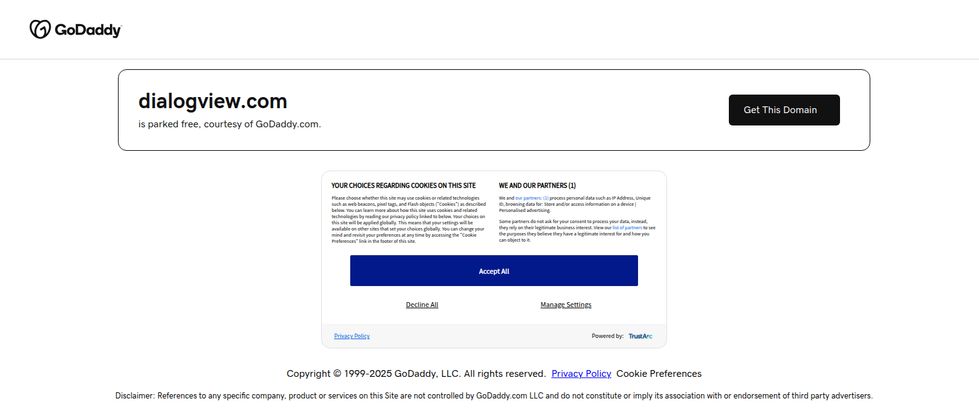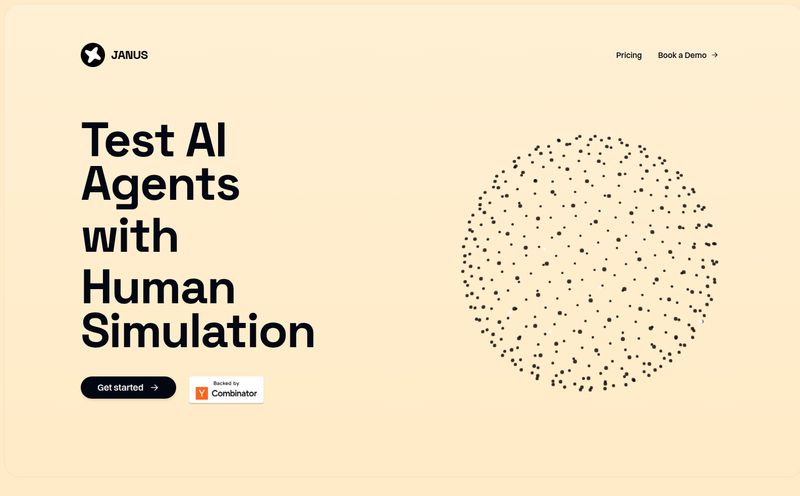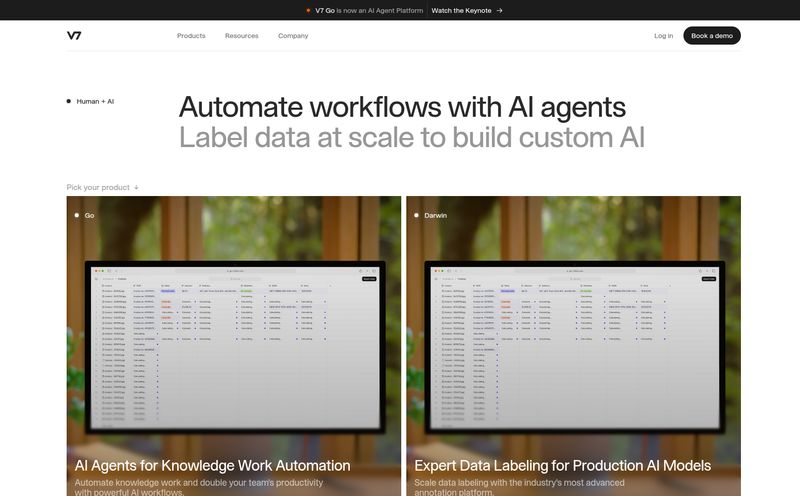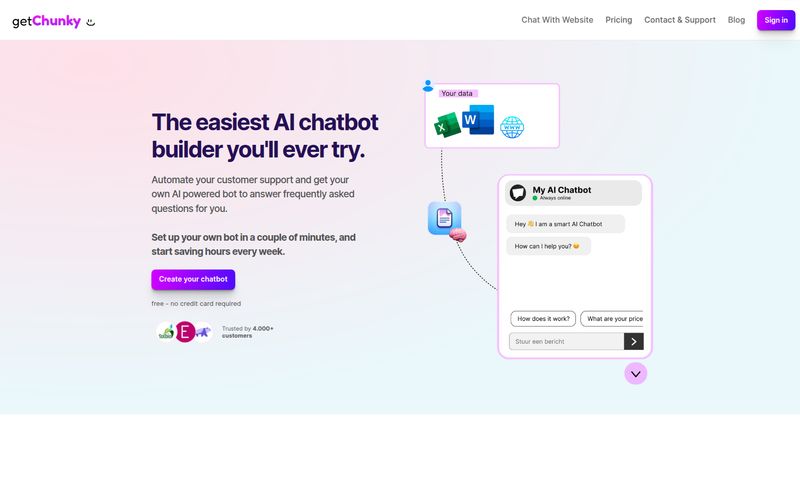You know how it is. As a marketer, an ops person, or just someone obsessed with traffic and conversions, you're always on the hunt for the next great tool. The one piece of software that will finally stitch everything together. For years, I've been searching for the Holy Grail of customer communication—a single platform to rule them all. So when I stumbled across mentions of a tool called Dialogview, my interest was definitely piqued.
The description was perfect: a "Smart Contact Centre Solution" with a unified interface for everything. Web Chat, WhatsApp, SMS, you name it. It sounded like the digital command center I'd been dreaming of. But then, I went to check out their website, and... well, I hit a GoDaddy parked domain page. A digital dead end. Oof.
So what happened? Was it a brilliant idea that fizzled out? An acquisition? It's a bit of a mystery. But the concept was so solid that I think it's worth digging into what Dialogview was supposed to be. Let's perform a little digital archaeology, shall we?
What Exactly Was Dialogview Meant to Be?
At its core, Dialogview was designed to solve a problem that drives businesses crazy. Your customers are everywhere. They're dropping you a message on WhatsApp one minute, then hopping over to the live chat on your website the next. Trying to keep those conversations straight across different apps is a recipe for disaster. It's like trying to have a coherent conversation with someone by shouting between rooms in a house. You're going to miss stuff, and everyone's going to get frustrated.
Dialogview promised a 'one-view interface'. The idea was to pull all those disparate threads—SMS, social messaging apps, web chat—into a single, manageable stream. For a support agent, this is revolutionary. No more tab-switching madness. Just one clear, chronological history of every interaction with a customer. In my book, that's not just a feature; it's a sanity-saver.
Unpacking the Features of This 'Ghost Platform'
The promise was big, and the feature list I managed to dig up was impressive. It wasn't just about pulling in messages; it was about giving teams the tools to handle them effectively. It really felt like they were trying to build a digital Swiss Army knife for customer support teams.

Visit Dialogview
Core Communication and Collaboration Tools
The foundation of Dialogview was its omnichannel messaging. The ability to manage Web Chat, WhatsApp, and SMS from one dashboard is the main event. But they didn't stop there. They also baked in features like Audio/Video Calls and even a full-blown Conferencing Solution. This suggests they were thinking bigger than just customer support. They were building a unified communications platform that could also be used for internal team collaboration, remote meetings and sales demos. Having your internal meeting tool and your external customer chat in the same ecosystem? Now that’s an interesting concept.
And for those tricky support situations, the inclusion of Screen Sharing is a godsend. Anyone who's ever tried to walk a non-technical customer through a software issue over the phone knows the pain. Screen sharing just cuts through all that confusion.
AI and Automation for Efficiency
Here's where things get really interesting for an SEO and efficiency nerd like me. Dialogview boasted an Intuitive Bot and an AI-Powered Virtual Agent. We're not just talking about simple chatbots that answer 'what are your business hours?'. A proper AI virtual agent can handle complex queries, freeing up human agents to focus on the high-touch, emotional, or revenue-generating conversations. This is the stuff that separates a good contact center from a great one.
It also had features like Canned Responses, which are a must-have for speed and consistency. I also saw mention of a Document Repository and Calendar Integration for scheduling meetings directly from the chat. These aren't the flashiest features, but they are the nuts and bolts of a highly efficient workflow. They're the little things that add up to a ton of saved time every single day.
The Grand Promise of a Unified Customer View
So, you take all those features and what do you get? The ultimate goal was, of course, improved customer satisfaction. When a customer doesn't have to repeat their issue five times to five different people, they're happier. It’s that simple. When their problem gets solved on the first try because the agent has all the context and the right tools (like screen sharing), they're happier.
And for the business, the benefits are just as huge. A unified platform means unified data. The promise of a central Dashboard with Analytics means you can finally get a clear picture of your customer service performance. What are the busiest channels? What are the most common problems? How quickly are we resolving issues? This data is gold for making smarter business decisions, optimising your support flow, and ultimately, improving your bottom line.
The Big Question Mark: Pricing and The Parked Domain
Alright, let's talk about the elephant in the room. The `dialogview.com` domain is parked. This is the part of the story where our exciting archaeological dig hits a solid rock wall. For a tool with such a well-defined feature set, it's strange for it to just... disappear.
The information I found suggested a typical B2B SaaS sales model. There was no public pricing page; you had to contact the sales team for a detailed quote. This is pretty standard for enterprise-level software, as pricing often depends on the number of agents, feature tiers, and business size. But it also creates a barrier to entry. I’ve always found it a bit frustrating; sometimes you just want a ballpark figure without sitting through a whole demo.
The combination of a 'contact us' model and a non-existent website is, to put it mildly, not a great sign. It could mean a few things:
- They went out of business. The most likely scenario. The tech world is brutal, and even great ideas can fail to find market fit or funding.
- They were acquired. It's possible a larger company like a Salesforce or Oracle bought them for their technology and absorbed it into their own suite, shutting down the original brand.
- They rebranded. They might still exist under a completely different name, having pivoted their marketing.
Whatever the reason, as of right now, Dialogview appears to be a ghost.
So, Where Do You Go From Here? Viable Alternatives
While the curious case of Dialogview is interesting, you probably landed here because you need a solution now. The good news is that the vision Dialogview had is shared by several other fantastic, and very much active, companies. If you're looking for that unified customer communication platform, you're not out of luck. Here are a few places I'd suggest you look:
- Intercom: A giant in the space, fantastic for its messenger-first approach and powerful bots.
- Zendesk: The old guard of customer service, Zendesk has evolved into a powerful omnichannel suite that can handle almost anything you throw at it.
- HubSpot Service Hub: If you're already in the HubSpot ecosystem, their Service Hub is a no-brainer. It integrates perfectly with their CRM and Marketing Hubs.
These platforms offer many of the same features promised by Dialogview, and crucially, they have websites you can actually visit.
Frequently Asked Questions
- What was Dialogview?
- Dialogview was conceptualized as a Smart Contact Centre Solution designed to unify customer communications from various channels like Web Chat, WhatsApp, and SMS into a single interface for support agents.
- What were some key features of Dialogview?
- It boasted a rich feature set including omnichannel messaging, an AI-powered virtual agent, audio/video calls, screen sharing, a conferencing solution, canned responses, and a central analytics dashboard.
- Is the Dialogview platform still active?
- All signs point to no. The official domain, dialogview.com, is currently a parked page, suggesting the service is no longer operational under that name. Its a bit of a mystery, to be honest.
- Why is an omnichannel contact center important?
- It creates a seamless and consistent customer experience. Customers can switch channels without losing context, and support agents have a complete history of all interactions, leading to faster resolutions and higher satisfaction.
- What are some good alternatives to Dialogview?
- There are several excellent, active platforms that fulfill a similar vision. Top contenders include Intercom, Zendesk, and HubSpot Service Hub, each with its own strengths.
- How was Dialogview supposed to use AI?
- It planned to use an 'Intuitive Bot' and an 'AI-Powered Virtual Agent' to automate responses to common questions, handle initial customer triage, and free up human agents to focus on more complex issues.
The End of the Line for a Good Idea?
So, we're left with the ghost of a great idea. Dialogview, on paper, was the kind of tool that could genuinely make a difference for a business and its customers. It had the right vision: unify, automate, and analyze. It’s a shame that it seems to have vanished from the web. It serves as a good reminder that in the fast-moving tech space, even the most promising solutions can become digital artifacts overnight. The hunt for the perfect tool continues, but the vision laid out by Dialogview is a great blueprint for what to look for.



